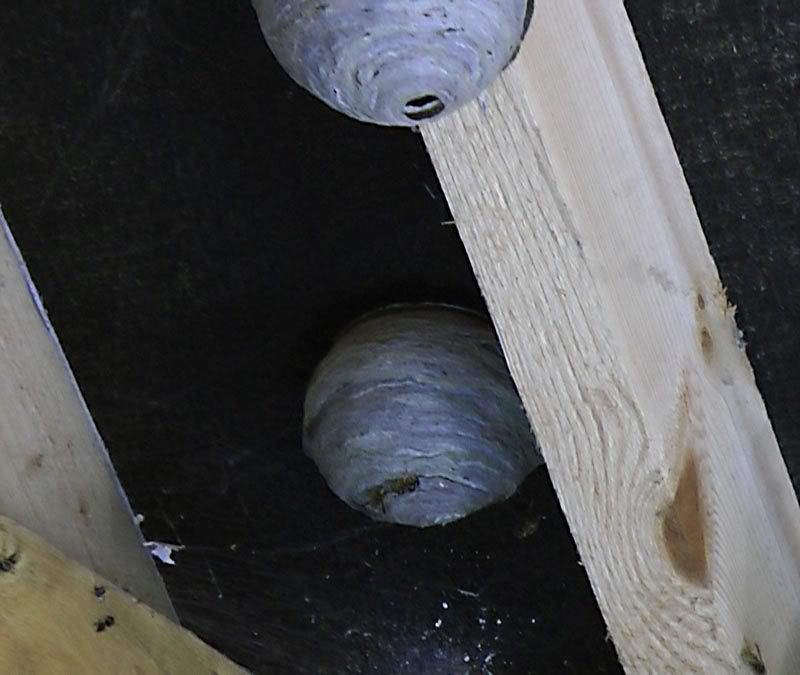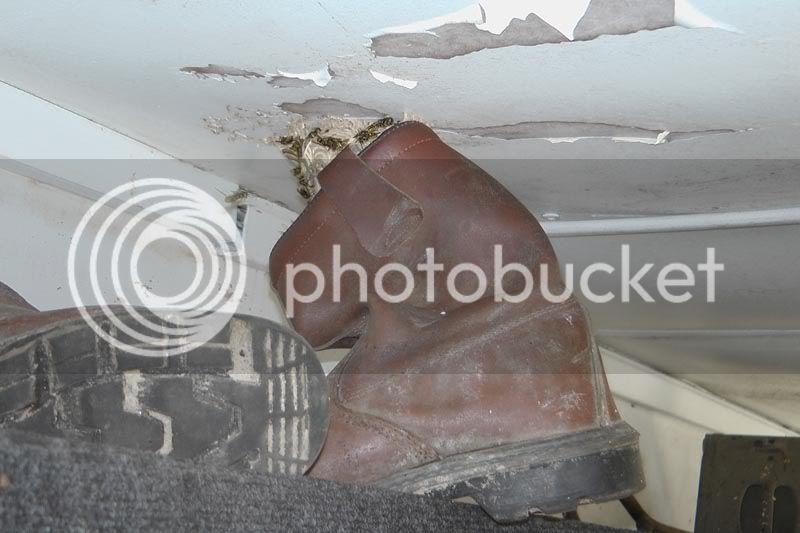we had a underground nest last year in the grounds which was delt with by a contract company at a high cost to us. where could i get the powder they used if i find a nest to deal with?
OK , I'm back again so I'll try to finish off my previous posting.
Treating nests without forethought may actually increase the number or duration of nuisance wasps that may then attack hives for honey. I would like to clarify first what I mean by nuisance wasps. In my book, nuisance wasps are those worker wasps from a colony which has gone into decline after maturation with the release of its sexual progeny. Essentially, nuisance wasps are worker wasps that are scavenging for sweet liquids because there aren't any grubs left in the nest. These workers are technically 'on their way out' i.e. starting to starve from a lack of food.
Back to the explanation. Wasps are able to identify and recognize each other on sight and recognition is confirmed by active communication between wasps. This behaviour is critical to wasp survival, no more so than in the way that they protect their food and their nests. Considerable research work has been done in this field where sentry wasps have been mounted (glued) onto wooden pilums and their levels of aggression measured in response to recognition challenges. The heads of wasps from the sentries own nests' together with the heads of wasps from different colonies were presented to the sentries and the 'fight' response measured. In 100% of cases, the sentry wasps were able to identify foreign wasps.
If you have ever watched wasps returning to a nest, you might perhaps have noticed that they stay outside of the guarded entry point adopting a defensive, dancing flight before finally entering. Actually what is happening is that the returning wasps are waiting to be recognized and are waiting for confirmation from the sentries to be allowed into the nest. Without that grant or permission of entry the returning wasps won't enter the nest. Infact, if they tried to enter without permission the sentries would kill them. This sentry recognition and affirmation behaviour leads to a very interesting phenomenon when it comes to nest treatment. Invariably, when insecticides are used to treat a nest, the first wasps to suffer are the sentries. This results in the loss of the recognition and affirmation process for returning wasps which means that they don't (ever) enter the nest and are therefore not killed by the insecticide.
It also means that if the nest is in its growth phase, i.e. the worker wasps are getting their food from their grubs, that this food source will be denied to them essentially prematurely creating nuisance wasps that then need to find an alternative source of sweet food, e.g. honey from hives. At any one time there may be anywhere between 1,500 to 4,500 worker wasps outside of a nest at any one time with about 200 to 500 wasps in residence. Treating a nest at the wrong time of year may therefore cause rebound problems. After nest maturation, all nest treatment reduces nuisance wasp numbers. Similarily, treating nests first thing in the morning, i.e. just before first light, is more likely to be successful because it will catch all of the worker wasps when they're 'home'. Treating during the day is far less effective.
Anyway, if you decide to treat the nest yourself, this is something that you should consider.
Professionally (as a pharmacist), I have to warn you that wasps are hazardous and they pose a serious health risk (especially with the recent emergence of medical data regarding Kounis syndrome) and it is probably wiser to use the services of an external contractor. Just for the record we are not a pest control company and don't offer or provide pest control services. Our specialization is limited to our product (that I shan't mention), and the integrated management of wasps. Not only am I keen to help bee keepers protect their bees but more importantly as a healthcare professional, my principal concern is trying to prevent the estimated 1,000 to 1,400 people that may be dying from wasp stings each year.
Best wishes,
Karol























































